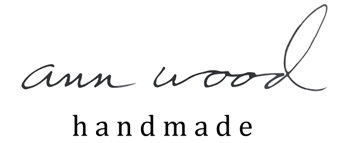
Welcome to the fourth annual scrap festival! That magical time of year when we celebrate scraps a little extra. I’ve scoured the interwebs for some awesome tutorials and created a new fabric book DIY that’s perfect for scraps.

It’s also perfect for the 100 day project if you feel like trying that. Fun and very manageable – you could do 15 minutes a day. I’m participating using the book as my project. My daily progress post will be in the @annwood instagram stories and on a page here too. If you’d like to sew along with me use #annwoodstitchbook and #annwoodpattern on instagram. You don’t have to commit to the hundred days to sew along but If you would like to more details are here.
For now let’s talk about how to get started on a couple pages:
*Download the template and cut 2 rectangles – these will be 2 pages.

Ignore the other marks on the pattern for now – just cut the rectangles. I’m using cotton and linen for the pages – the brown is from a worn out duvet and the black was a little jacket.
Stitch whatever you like on your rectangles, embroidery, collage, mess around, try stuff, meander. Leave about 1/2 inch margin all around the edge to make book assembly easy. Need some inspiration? You might find this post helpful. I test drove the 15 minutes a day idea and this is what I came up with.

I used a timer and everything. It was a focused 15 minutes and felt good. The time limit eliminates paralysis and overthinking and invites happenstance. I love the idea of each day building on the previous.
For the one hundred day project my suggestion is 15 minutes per day. The book has 20 pages including the front and back covers so each page is stitched for 5 days, 15 minutes per day. So do-able! Over achievers feel free to do more. As I’m stitching and sharing I’ll include some simple prompts and suggestions in case you’re feeling stuck.
Why do it? It’s a little window of time to listen to yourself, try stuff, make marks, experiment. A place for ideas to turn up. And a perfect place to celebrate your most precious scraps!

You don’t have to do the 100 days to sew along but if you are, start stitching on Sunday 2/13- 15 minutes per day. After 5 days, move on to the second page. Meet me back here on February 23rd for the full book tutorial (you’re gonna love it, super easy to make and the binding is clever).
I hope you make stitch books! Don’t forget to use #annwoodstitchbook and #annwoodpattern on instagram. And if you’re doing the hundred days also use #The100DayProject
9 more scrap projects!

1. A sweet bucket pouch from honeyfolkclothing. The pfd is free through the end of this month only and you can find it here. And checkout @honeyfolkclothing (heidi) on on iinstagram for lots of inspiration. She is a scrap hero!
2. string quilt – Lots and lots of skinny fabric strips stitched together and can be arranged in intriguing ways. Simple, meditative and built for scraps. Find the tutorial here.

3. Something for little folks by sewmariana – a fabric memory game – find the tutorial for the game squares here.
4, And use your bigger scraps or pieced scraps (like hexies or the afore mentioned string piecing) to make a sweet fabric container to keep them in with this DIY.
There are tons of scrap friendly projects in the free pattern library here – a couple favorites are:

5. happy cats

6. and the newest – dancing hares
7. Improv with X. I love the idea of experimenting with a simple shape. Checkout the X quilt improv blocks here. And tons more inspiration from shecanquilt on Flickr here.

8. Something for your littlest scraps, These charms are super sweet. I love how mini they are and they could be stuffed with lemon verbena or lavender. Such a sweet little gift. Find the tutorial here.
9. Sweet for spring – carrot treat bags to sew – plus find fabric eggs and more spring ideas here.
A couple bonus ideas from the blog
Long pin cushions are a perfect scrap project and super handy to have. And imperial cats are great to experiment with.
Do you have a favorite scrap project? Will you join me in sewing a fabric book? Let us know in the comments and happy scrap festival 2022!






















































































































